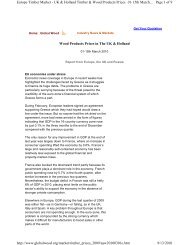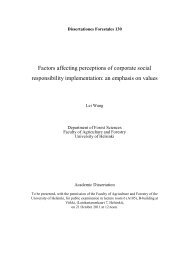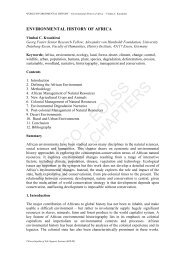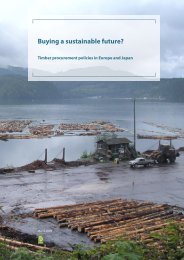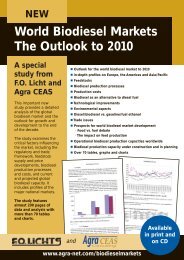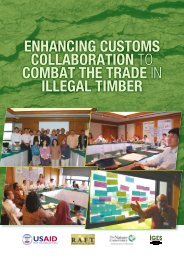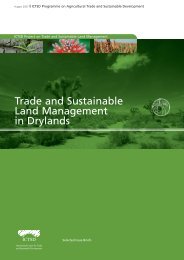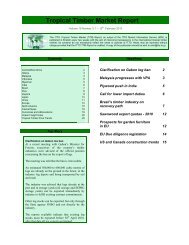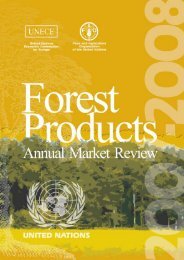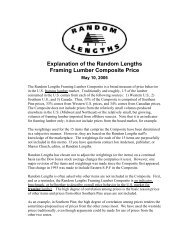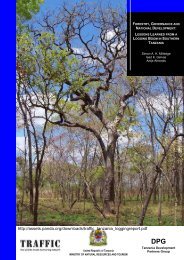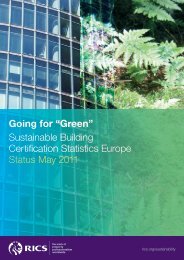ICT and e-Business in the Pulp, Paper and Paper ... - empirica
ICT and e-Business in the Pulp, Paper and Paper ... - empirica
ICT and e-Business in the Pulp, Paper and Paper ... - empirica
You also want an ePaper? Increase the reach of your titles
YUMPU automatically turns print PDFs into web optimized ePapers that Google loves.
<strong>Pulp</strong>, paper <strong>and</strong> paper products<br />
4.2 <strong>ICT</strong> as a Driver of Process Efficiency<br />
4.2.1 Introduction<br />
Improv<strong>in</strong>g <strong>the</strong> efficiency of production <strong>and</strong> supply cha<strong>in</strong> processes is an important<br />
objective for all manufactur<strong>in</strong>g bus<strong>in</strong>esses. However, <strong>the</strong> potential depends on <strong>the</strong><br />
structure <strong>and</strong> characteristics of supply cha<strong>in</strong> processes. This section explores <strong>the</strong> impact<br />
of <strong>ICT</strong> on bus<strong>in</strong>ess processes of companies from <strong>the</strong> P&P <strong>in</strong>dustry <strong>and</strong> assesses where<br />
<strong>the</strong> major potential sources for <strong>in</strong>novation <strong>and</strong> productivity improvements are located.<br />
The assessment <strong>and</strong> conclusions are based on desk research, case studies (all case<br />
studies featured <strong>in</strong> this report, not only those conta<strong>in</strong>ed <strong>in</strong> this section), <strong>in</strong>terviews with<br />
bus<strong>in</strong>ess representatives <strong>and</strong> data from <strong>the</strong> e-<strong>Bus<strong>in</strong>ess</strong> Survey 2006. A significant<br />
challenge for this <strong>in</strong>dustry is how to draw valid general conclusions: <strong>the</strong> sub-sectors<br />
have different characteristics <strong>and</strong> <strong>the</strong>refore potentially different drivers lead<strong>in</strong>g to<br />
differences <strong>in</strong> <strong>the</strong>ir major e-bus<strong>in</strong>ess activities (e.g. technology for paper manufactur<strong>in</strong>g<br />
vs. technology for paper convert<strong>in</strong>g). Fur<strong>the</strong>rmore, ma<strong>in</strong> conclusions are presumably<br />
different for small <strong>and</strong> large firms. To <strong>the</strong> extent possible with<strong>in</strong> <strong>the</strong> scope of this report,<br />
<strong>the</strong>se functional <strong>and</strong> structural differences are taken <strong>in</strong>to account. However, some<br />
generalisations (for "<strong>the</strong> <strong>in</strong>dustry"), are proposed where applicable.<br />
Companies from <strong>the</strong> P&P <strong>in</strong>dustry, depend<strong>in</strong>g on <strong>the</strong> segment <strong>and</strong> size of operations,<br />
have chosen different approaches to build<strong>in</strong>g <strong>the</strong>ir supply cha<strong>in</strong>, l<strong>in</strong>k<strong>in</strong>g to suppliers from<br />
forestry <strong>and</strong> <strong>the</strong> chemical <strong>in</strong>dustries (upstream) <strong>and</strong> to customers, e.g. <strong>in</strong> <strong>the</strong> food <strong>and</strong><br />
beverages <strong>in</strong>dustry (downstream). <strong>ICT</strong> service providers talk about <strong>the</strong> "total forest supply<br />
cha<strong>in</strong>" <strong>in</strong> this context. 77 Supply cha<strong>in</strong> <strong>in</strong>tegration via connect<strong>in</strong>g ERP systems (or similar<br />
st<strong>and</strong>ard software packages) is <strong>the</strong> most common approach which medium-sized <strong>and</strong><br />
larger companies <strong>in</strong> <strong>the</strong> sector use to manage <strong>the</strong>ir operations.<br />
4.2.2 Substitution of paper-based processes<br />
An important focus of e-bus<strong>in</strong>ess activities <strong>in</strong> <strong>the</strong> P&P <strong>in</strong>dustry is <strong>in</strong>tended to <strong>in</strong>crease <strong>the</strong><br />
supply cha<strong>in</strong> efficiency by elim<strong>in</strong>at<strong>in</strong>g paper-based processes as much as possible <strong>in</strong> all<br />
stages of B2B trade, thus optimis<strong>in</strong>g <strong>the</strong> flow of <strong>in</strong>formation <strong>and</strong> documents <strong>in</strong> <strong>and</strong><br />
between companies. ERP systems are currently <strong>the</strong> ma<strong>in</strong> platform to enable this goal. 78<br />
The critical role of ERP systems<br />
The use of ERP systems is widespread among companies from <strong>the</strong> P&P <strong>in</strong>dustry,<br />
compared to most o<strong>the</strong>r sectors studied by e-<strong>Bus<strong>in</strong>ess</strong> W@tch <strong>in</strong> 2006 (see also Section<br />
3.4.1). In total, companies represent<strong>in</strong>g 45% of employment said <strong>the</strong>y operated an ERP<br />
system; <strong>the</strong> <strong>ICT</strong> manufactur<strong>in</strong>g <strong>in</strong>dustry is <strong>the</strong> only one among <strong>the</strong> 10 sectors studied with<br />
an even higher adoption rate. In general, ERP systems are mostly used by manufactur<strong>in</strong>g<br />
77<br />
78<br />
See, for example, TietoEnator, a service provider cater<strong>in</strong>g to <strong>the</strong> pulp, paper, board <strong>and</strong> tissue<br />
<strong>in</strong>dustries (www.tietoenator.com > <strong>in</strong>dustry expertise areas, April 2006).<br />
Note that ERP (Enterprise Resource Plann<strong>in</strong>g) software has a broader functionality for<br />
companies than just to elim<strong>in</strong>ate paper-based processes. This section focuses on specific<br />
aspects only.<br />
106



